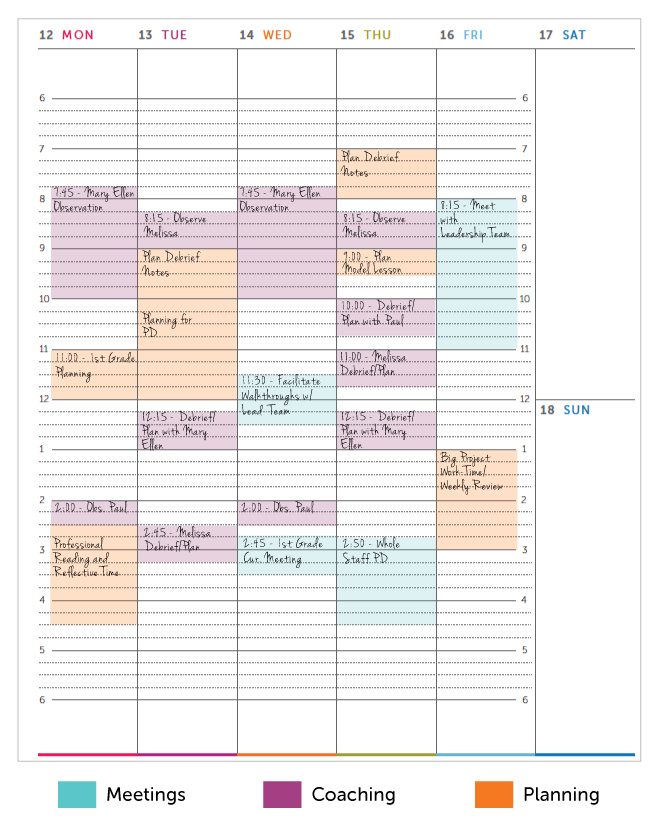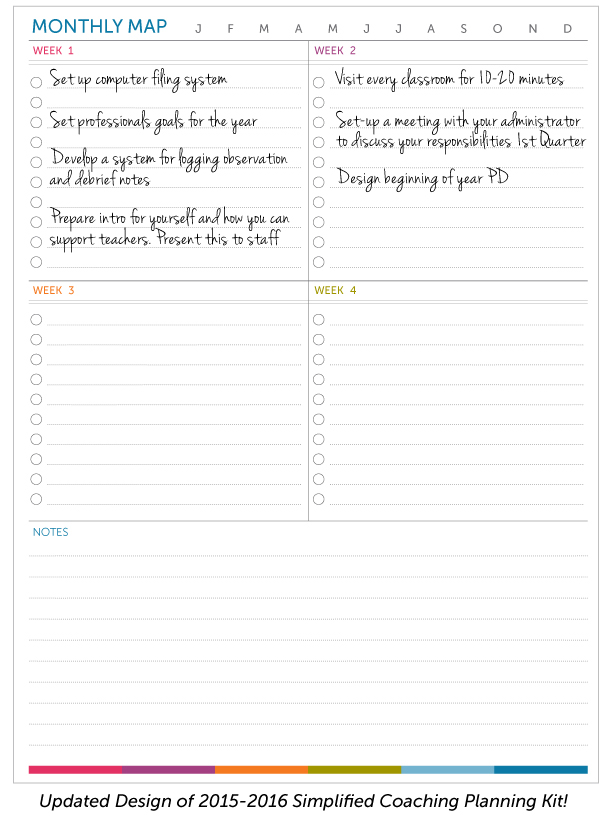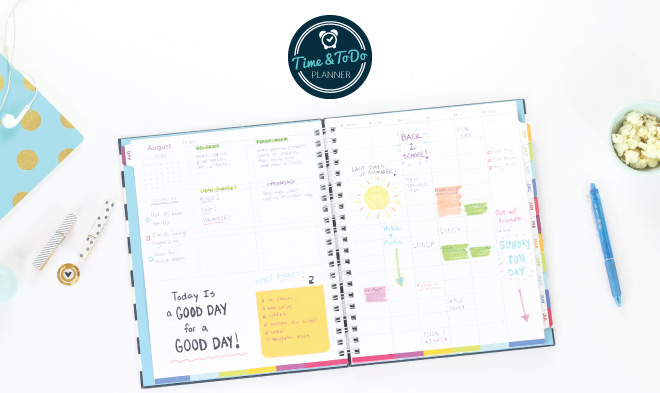3 Keys to Finding the Time for Quality Coaching
Categories: Teaching Tips
I was doing some reading earlier this week from one of my favorite new books, Leverage Leadership, and got all excited when I flipped the page and landed on Chapter 8: Finding the Time. Why was I excited? Because I really like reading about time management strategies for educators, and good info on this topic is hard to come by.
As we reflect on the past school year and look towards the next, it’s helpful to consider what worked and what may need to be improved for next year in the area of scheduling, time management, and “making it all work.”
So what did the chapter have to say? Here is an overview of the three key tools discussed in the book {along with some tid-bits of my own}, to finding the time for quality leadership and coaching.
![]()
The idea here is that your weekly schedule should be intentionally built to reflect the work that best supports building excellent schools. I would say that of the six “levers” discussed in the book, the three that most apply to coaches include: Professional Development, Observation and Feedback, and Instructional Planning. Here are the steps for getting them in place.
Step 1: Lock in Your Group Meetings
The first set of events to schedule are regular group meetings: PD, leadership team meetings, grade level team meetings, data meetings, and so on. Which meetings will you be facilitating? What communication needs to be sent to staff and how much time might you need to prepare? Be careful about too many meetings…planning to attend all grade level meetings every week might not be the best use of your time. Identify your priorities, and keep the focus there.
Step 2: Lock in Your Observations and Debriefs
Now it’s time to lock in your observations and debriefs with teachers for the week…arguably the highest leverage driver of your work. For each coachee, I like to schedule two observations per week, and two debriefs. The time you have scheduled for a visit doesn’t have to be concrete, and will likely depend on your coaching goal. For example, if I’m working with a teacher on guided reading I may only need to be in their room for 30 minutes, whereas if I’m working with another teacher on reader’s workshop, I’ll likely be in there for a full hour.
Something else to keep in mind is how closely you schedule your debriefs to your observations. I always leave some space between the two so I have time to plan and prepare my notes.
Step 3: Build in Time for Planning
The final piece is to build in blocks of time when you’ll work on instructional planning. For coaches, this could include preparing yourself for an upcoming coaching cycle with a goal you need to do some reading and research on. You might also consider building in time to throughly prepare for the debriefs you have scheduled, planning for next week’s PD, or working with a teacher to problem solve why a certain student isn’t making growth. There isn’t really a set amount of time to dedicate to this piece each week. It really just depends on what you have already built into your schedule after completing the first two steps.
Here’s an example of what your weekly schedule might look like with all three levers in place:

![]()
Alright, now that you’ve got a clear calendar for the week and some mental white space, let’s defend it! You’re already ahead of the game by having mapped out your time, but here are a few quick tips for sticking to your game plan.
- Get On The No Train: Here’s the thing…whatever you say yes to, means you’re saying no to something else. Yes, coaches need to be flexible and you can’t always say no, but it’s important to be mindful of the trade you may be making.
- Plan Blocks for Communication: Email is seriously distracting. It breaks your flow and takes you away from often more important work. Since the majority of communication takes place via email in a school though, you can’t really just ignore it. But you can be more strategic about it. How about blocking out one chunk of time each day to process all of your emails, then just take a peek a few more times during the day to monitor for anything urgent, but hold off on responding. I know, that takes big-time discipline and I’m not even there yet. But we can work towards it!
![]()
You’re in the home stretch! You’ve locked in your weekly schedule and defended your time. The last piece is to get all of those tasks in order: your daily tasks and your monthly tasks.
To keep track of it all, coaches need a way to map their actions and build a plan beyond the daily and weekly level. Leverage Leadership discusses a tool they’ve seen leaders use called the monthly map. It’s a nifty little tool that helps you keep your eyes on what matters most.
Here’s an example of what your map might look like for the first month back at school, using the monthly map offered in The Simplified Coaching Planning Kit.

Design Coordinates with the Time & ToDo Planner

Exceptional coaches thrive not by working more hours, but by making their hours count.
So how will you make yours count?
See you next week,
![]()


No comments yet.